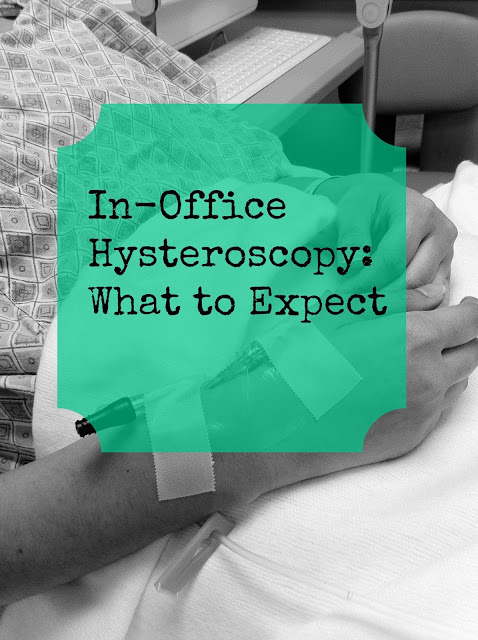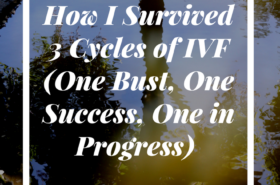Last week, I had a hysteroscopy performed in my gynecologist’s office. I have had one previous hysteroscopy performed back in 2011 while under general anesthesia. (It was done at the same time I was getting my laparoscopy.) I was a little nervous and anxious about the in-office procedure because I would be awake and I didn’t quite know what to expect.
Why did I have a hysteroscopy?
The purpose of my hysteroscopy was to examine my uterus and look for potential causes for thickened endometrial lining and abnormal bleeding. Here is a link from WebMD that gives a general description of the procedure.
I have experienced spotting in between my periods and heavier, unpredictable periods since I stopped breastfeeding. My doctor suspected a polyp could be causing these symptoms, but she couldn’t tell from the ultrasound. She could see thickened lining, but would need to look inside to find the cause.
I have a history of polyps so it wasn’t a big surprise. But, it was still a little disappointing that pregnancy didn’t do much to “cure” my issues like I have been told prior to getting pregnant. I’ll explain more below.
My doctor was very reassuring and felt confident that the hysteroscopy was the proper next step. She explained that she could remove a few small polyps during the procedure, but if she happened to see numerous polyps or an unusually large polyp or fibroid, she would need to schedule surgery under general anesthesia to remove those.
Here is a detailed description of my experience
After that, my doctor left the room for about ten minutes so the local anesthetic could do its thing. During that time, I chatted with one of my doctor’s assistants and tried my best to relax. My doctor returned and we were ready to start the procedure. She told me I could look at the screen and that some women opted not to look. She also told me this procedure is normally better tolerated by women who have given birth before versus women who haven’t due to the cervix being more “open” for lack of a more technical term.
The screen turned on and suddenly I got to see myself from the inside. It was sort of fascinating. The camera that was being guided through my uterus was the width of the top of a pencil. I also had saline flowing into my uterus to expand it. My doctor got a good view of everything and found several polyps and tissue to cut out. The removal part was sort of tedious. My legs eventually got tired of being in the stirrups and my muscles got shaky. The entire procedure lasted about 45 minutes or so. Prior to the procedure, I was told it could be as quick as 10-15 minutes. Mine lasted longer because she found polyps and wanted to clean me out as much as possible. The samples were sent off to pathology to be biopsied to confirm that (1) they were polyps and (2) they weren’t cancerous.
The procedure ended and I was given a pad and told to expect some spotting and bleeding, but to call if I was bleeding excessively, developed a fever, or had severe abdominal pain. I had no pain the evening of the procedure, but felt a little sore in the following days. I spotted for about a week.
Concluding Thoughts
My doctor explained that my thickened lining and my body’s tendency to make polyps could be due to a hormonal imbalance of excess estrogen. Estrogen dominance can cause a host of symptoms and is linked to endometriosis and thyroid issues. Environmental factors and lifestyle choices can also play a role in causing hormone imbalances. I have to re-visit my diet, increase my exercise, and keep my stress levels to a minimum. Also, if the spotting continues, I will get started on progesterone supplements.
I’m not sure if my experience is unique or run of the mill or somewhere in between, but I would be happy to answer any questions or concerns. Feel free to email me or comment below.





MsG
wow! this sounds scary. I was under the impression endometriosis meant we had excess estrogen. I try to stay away from soy bc for some reason it stuck with me that it can cause excess estrogen as well. Good luck with your lifestyle changes.
thelessthandomesticgoddess
It was pretty intimidating! But luckily not super painful. Yes on the excess estrogen and endo. I wish there was a pill (other than the birth control pill) that could get rid of the endo. To have to revisit lifestyle changes, while all well and good, is exhausting! Oh well. The plight of women with endometriosis.
violarulz/ducksandbooks
thank you for writing this up! I've got mine scheduled in 2 months (2 more months of medications and IUI before we start the IVF testing….)